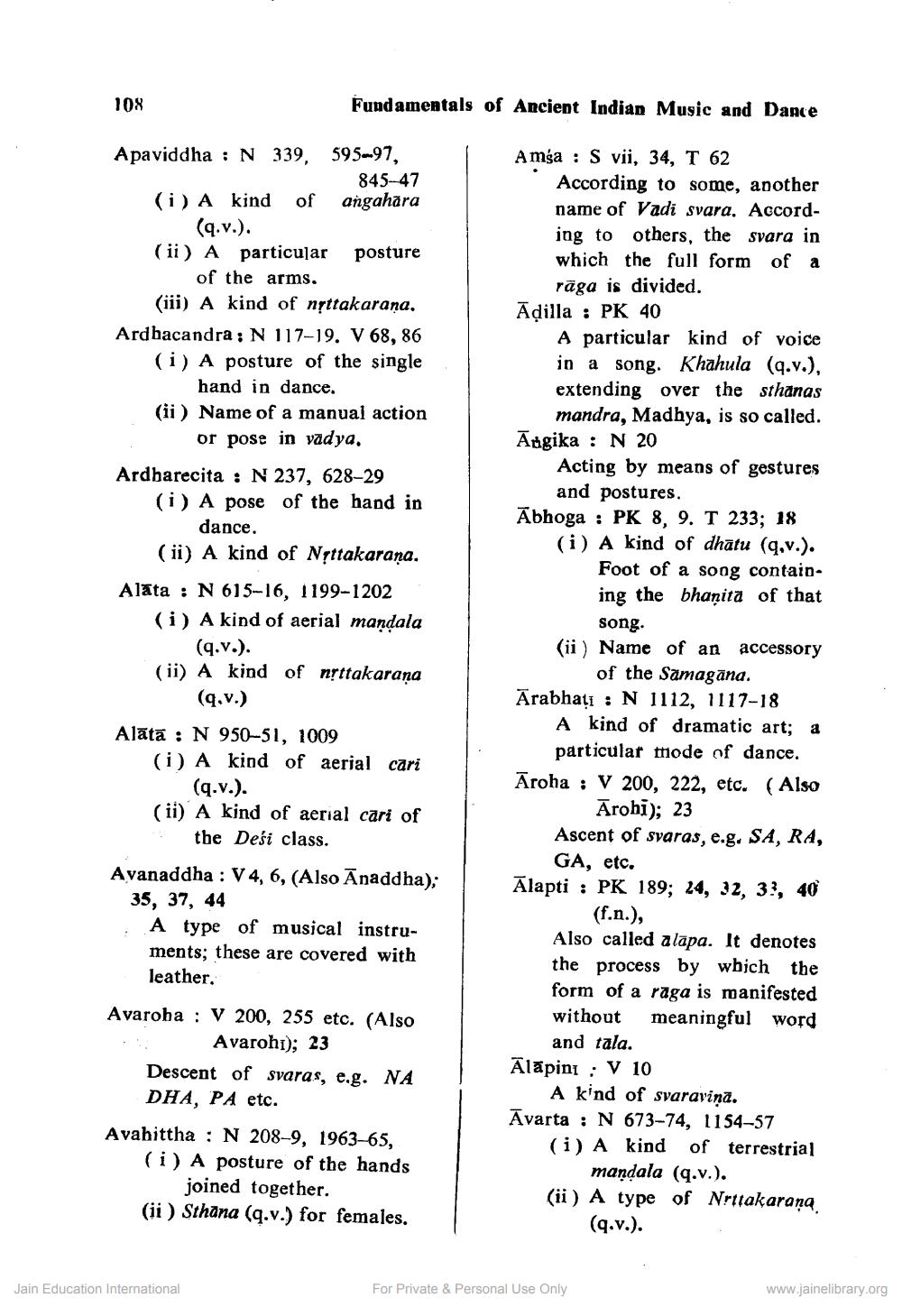________________
108
Fundamentals of Ancient Indian Music and Dance
Apaviddha : N 339, 595-97,
845447 (i) A kind of angahara
(q.v.). (ii) A particular posture
of the arms. (iii) A kind of nșttakarana. Ardbacandra: N 117-19. V 68,86 (i) A posture of the single
hand in dance. (ii) Name of a manual action
or pose in vadya, Ardbarecita : N 237, 628-29 (i) A pose of the hand in
dance. (ii) A kind of Nittakarana. Alāta : N 615–16, 1199-1202 (i) A kind of aerial mandala
(q.v.). (ii) A kind of nșttakarana
(q.v.) Alāta : N 950-51, 1009 (i) A kind of aerial cari
(q.v.). (ii) A kind of aerial cari of
the Deši class. Avanaddha : V 4, 6, (Also Ānaddha); 35, 37, 44
A type of musical instruments; these are covered with leather,
Amsa : S vii, 34, T 62
According to some, another name of Vadi svara. According to others, the svara in which the full form of a
rāga is divided. Adilla : PK 40
A particular kind of voice in a song. Khahula (q.v.), extending over the sthanas
mandra, Madhya, is so called. Ādgika : N 20
Acting by means of gestures
and postures. Ābhoga : PK 8, 9. T 233; 18 (i) A kind of dhatu (q,v.).
Foot of a song containing the bhanita of that
song. (ii) Name of an accessory
of the Samagāna. Ārabhati : N 1112, 1117-18
A kind of dramatic art; a
particular mode of dance. Aroha : V 200, 222, etc. (Also
Arohi); 23 Ascent of svaras, e.g. SA, RA,
GA, etc. Alapti : PK 189; 24, 32, 3?, 40
(f.n.), Also called alapa. It denotes the process by which the form of a raga is manifested without meaningful word
and tala. Alapini : V 10
A kind of svaraviņā. Āvarta : N 673-74, 1154-57 (i) A kind of terrestrial
mandala (q.v.). (ii) A type of Nattakarang
(q.v.).
Avaroha : V 200, 255 etc. (Also
Avarohi); 23 Descent of svaras, e.g. NA
DHA, PA etc. Avabittha : N 208–9, 1963–65, (i) A posture of the hands
joined together. (ii) Sthana (q.v.) for females.
Jain Education International
For Private & Personal Use Only
www.jainelibrary.org




